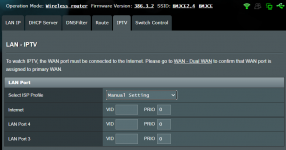TheLyppardMan
Very Senior Member
I've just discovered that Openreach in the UK are going to switch off all non-digital telephone landline services in 2025, so we shall all have to migrate to fully-digital communications at sometime between now and then. I guess that's why they are laying new fibre optic cables all around the country at the moment, including Worcester, where I live. So, if I understand this correctly, I shall need to replace the current cable from the master socket to my DrayTek modem with a Cat 5/6/7 cable direct from the ONT, when it's installed, to my ASUS RT-AX88U at the top of the stairs and then remove the redundant DrayTek device. Question: will it make much difference if I use a Cat 5, 6 or 7 cable when I come to change it and if so, by roughly how much? Also, I believe that since the new fibre optic cables are being laid by City Fibre, there is a setting I shall need to change in the router, but I can't remember what it is or what I shall need to change it to. Can anyone help with that please? Many thanks.


